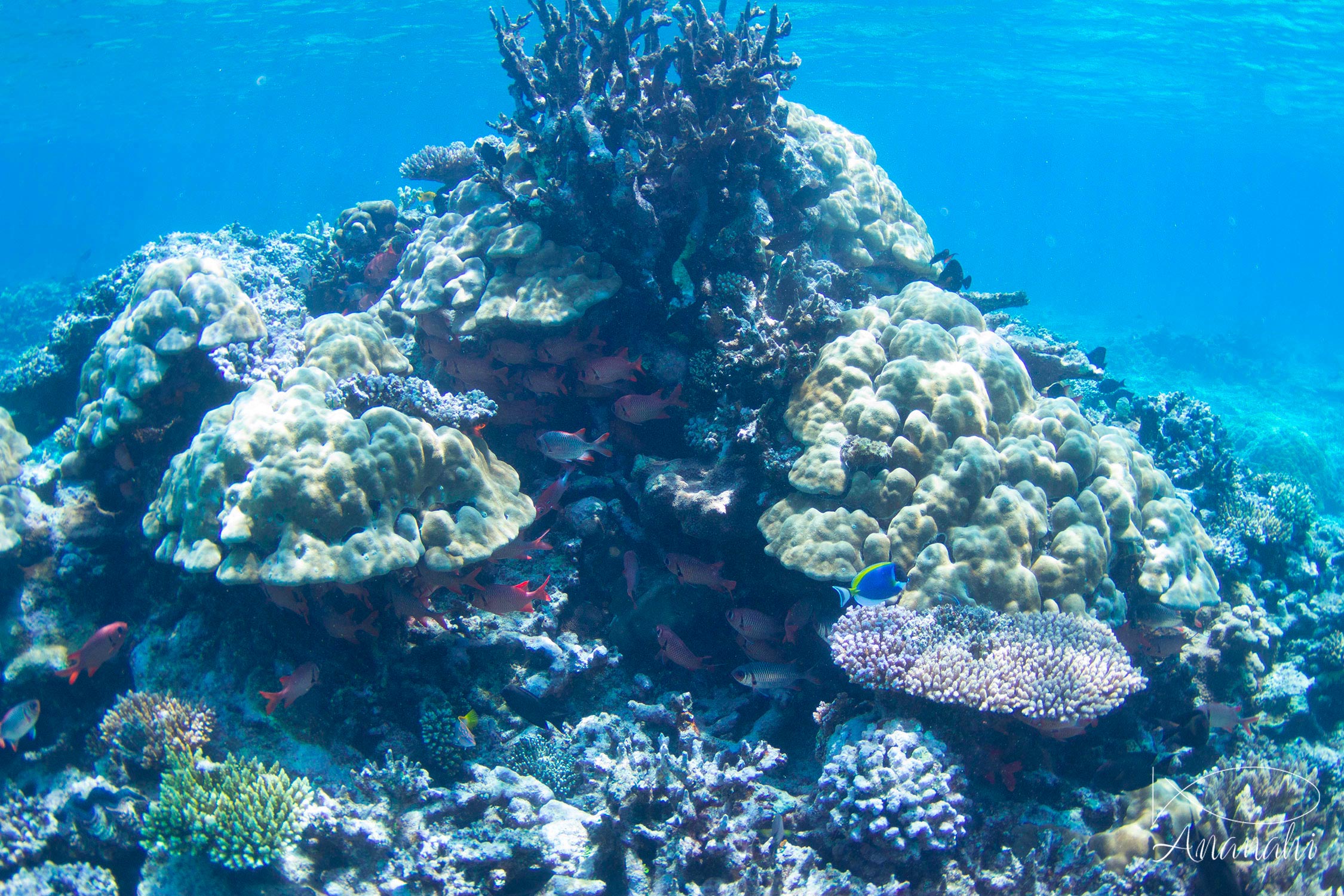
Scientific name: Porites lobata
Size: From 2.5 to 10 foot
Color: Beige, brown, yellow
Distinguishing feature: Very massive block, looks like a lava flow very porous when you touch it
Where did we see it: Bali and Gili, Zanzibar, Thailand, French polynesia, Mayotte, Maldives, Raja Ampat, Egypt

Scientific name: Porites lobata
Size: From 2.5 to 10 foot
Color: Beige, brown, yellow
Distinguishing feature: Very massive block, looks like a lava flow very porous when you touch it
Where did we see it: Bali and Gili, Zanzibar, Thailand, French polynesia, Mayotte, Maldives, Raja Ampat, Egypt
It's one of the most important corals, especially in the Indian Ocean, Pacific and Red Sea.
It's also a coral that grows very slowly, about 0.4 inch / year, but its body is very solid.
Thanks to the hardness of this body, when it dies, it becomes a substrate on which many organisms come to live.
This makes it one of the bioconstructive corals, which actively participates in the construction of coral reefs.
It's the most common species of Porite genus coral.
We can hear the bull shark is very dangerous because of attacks near La Réunion island.
However, tens of them are living at 600 feet from the famous beach of Playa Del Carmen in Mexico. And there are no attacks.
Turtles are in economy mode when they are sleeping. If they are woken during night, they may not have enough air to return to surface.
So, please be careful during night dives!
Some sharks can stay motionless on the sand (white tips reef sharks, nurse sharks, etc.).
These sharks don't have to swim to bring oxygen to their gills like other sharks (grey, hammerheads tc.)